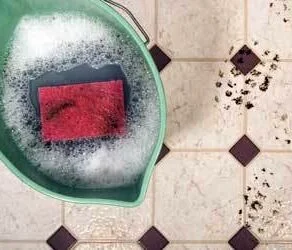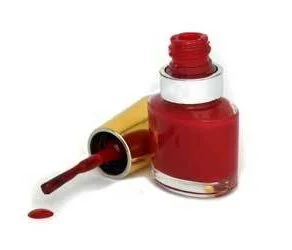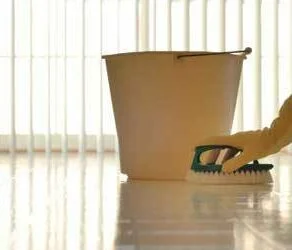
Julie asked: How do I keep old linoleum from leaching onto new vinyl? I have a square of very old linoleum (probably from the 50s) under the toilet in my bathroom, and the vinyl laid over 15 or more years ago had turned yellow in that area. I am replacing the vinyl now, but can’t lift the old linoleum square. It is really stuck down. Is there anything I can clean or seal it with to prevent any chemicals from the old linoleum leaching through to the new vinyl being laid?.
The yellowing of vinyl flooring is a common complaint and is most often caused by what is on top of it, not what is below it. For common causes and tips on cleaning yellowing vinyl floors, see our guide How to Remove Yellow Stains on Linoleum Flooring. If you are going to install a new floor over old linoleum, however, it’s best to start with a new base. Luan, a thin plywood, is ideally suited for installation over existing floors. It’s relatively easy to work with, won’t raise the level of your floor any significant amount, and provides a smooth, even surface to keep your new flooring looking its best. Ready to get started? Here’s what you need to do.
You Will Need:
- Luan
- Measuring Tape
- Saw (power or hand)
- Pneumatic stapler
- Safety glasses
- Paper
- Pencil
- Vinyl flooring adhesive
- Notched trowel
- Vinyl flooring, cut to fit the room
Steps to Install the New Floor:
- Begin by measuring and diagramming the floor you want to replace. A simple guide will help you as you work.
- Sweep the floor clear of all debris.
- Lay the first sheet of luan and staple it in place about every 8” around the edges.
- Continue to cover the rest of the floor with luan, using the saw to trim it as needed. (Wear safety glasses when working with the saw, stapler, or other power tools). For difficult cuts, it’s okay to cut the board into smaller pieces. Because it’s an underlayment, you won’t be able to tell with the new floor completed as long as you don’t leave any gaps.
- Once the floor has been completely covered with luan, sweep it again and apply a thin layer of vinyl flooring adhesive using the notched trowel. Follow all label directions, making sure all seams are coated. Pay particular attention to the edges, as you’ll want the vinyl flooring to really stick there.
- Lay the vinyl flooring.
- Allow your new floor to dry the recommended amount of time before walking on it or adding furniture.
Additional Tips and Advice
- Make sure the floor is completely level before adding a new layer. Any imperfections under your vinyl floor will be obvious later. One way to check to see if the floor is level is by getting down on your hands and knees with a flashlight in a dim or dark room. Lay the flashlight directly on the floor and sweep the beam across the surface. Shadows will give away any problem spots.
- If adding luan isn’t an option, you can apply the vinyl directly to the old linoleum floor. You’ll need to use a floor stripper to make sure it’s free of all dirt and oils and allow it to dry completely before applying the vinyl adhesive.
- Don’t use nails under vinyl. They’ll back out and cause problems ranging from unsightly bumps to tears in the vinyl.
- Most professional installers will not remove old flooring due to the chances of it containing asbestos. If possible, it’s best to leave it put.







I love your page! Many thanks.
One problem I have not seen on your pages. We bought a vinyl kitchen floor with deep ditches or crevices. (I would never do it again, although it looks nice.) Is there a filler for that type of floor? I have to hand scrub to get old lettuce leaves, the food, etc., out of the gulleys!
Rowena,
It sounds like the product you are looking for is “grout.” There is a specific type of grout you use for vinyl tiles, I believe it is an acrylic grout, whereas a sanded grout is used for stone tiles. A person at a hardware store can probably help you find the product you need.
Source: SAS Interiors – DIY: Installing Groutable Vinyl Tile and $100 Lowes Gift Card Giveaway #LowesCreator
A cleaning agent I used on my linoleum floor has taken the surface wax off, but only in spots. Will I have to take all the wax off the floor before it can be restored? The floor is about 20 years old.
Joan,
In general, it would be better to strip all of the wax off before refinishing to prevent build-up, but it isn’t necessary. You can simply rewax the area where it was stripped. If you do decide to remove all of the wax, you can use the steps in the guide How to Remove Wax from Vinyl and Linoleum Floors.